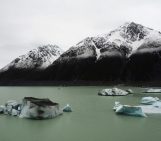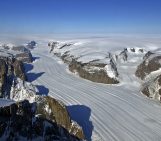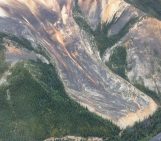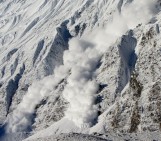This week Ian Joughin, a research scientist from the Polar Science Center at the University of Washington, takes us on the polar express to put glacial processes into perspective and find out what makes a moulin…
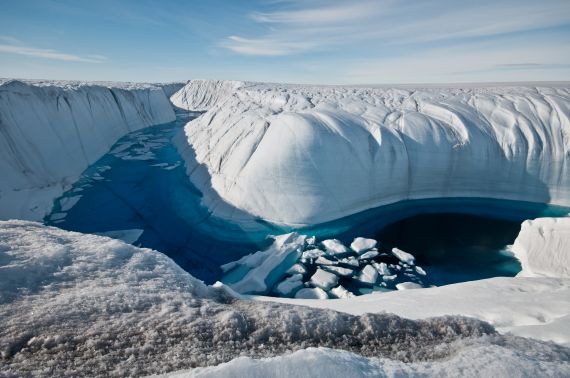
“Water filled canyon” by Ian Joughin, distributed by the EGU under a Creative Commons licence.
This canyon formed when a melt lake on the surface of the Greenland Ice Sheet overflowed and created a stream that extended out toward a crevasse field. This outflow stream filled a crevasse, causing it to fracture under the pressure of the liquid, creating a hydrofracture that ran through the full thickness of the ice sheet. This fracture created a conduit to the base of the ice sheet, known as a moulin, through which the surface water drained to the bed.

Surface water entering a moulin on Athabasca Glacier. (Credit: Wikimedia Commons user China Crisis)
Over the course of several years, the turbulent overflow stream melted the ice down to create this canyon. By the time this photo was taken, snow had dammed canyon near the lake outlet, meaning it no longer actively drained the lake.
Most of the water in the photo is from melt at the sides of the canyon. The ice is flowing at approximately 100 m/yr, slowly moving the stream outlet toward higher ground so it is unlikely that the lake will overflow at this location again. And instead, we have found a new canyon forming in a lower part of the lake basin.
By Ian Joughin, University of Washington
The EGU’s open access geoscience image repository has a new and improved home at http://imaggeo.egu.eu! We’ve redesigned the website to give the database a more modern, image-based layout and have implemented a fully responsive page design. This means the new website adapts to the visitor’s screen size and looks good whether you’re using a smartphone, tablet or laptop.
Photos uploaded to Imaggeo are licensed under Creative Commons, meaning they can be used by scientists, the public, and even the press, provided the original author is credited. Further, you can now choose how you would like to licence your work. Users can also connect to Imaggeo through their social media accounts too! Find out more about the relaunch on the EGU website.

